As the world races towards a more sustainable future, the need for efficient and eco-friendly heating solutions has never been more critical. District heating (DH) systems have emerged as a promising option for reducing carbon emissions and supplying heat efficiently. In this blog post, I will summarize the key results of my PhD about automated design and development of 4th and 5th generation district heating systems.
Understanding district heating systems
District heating systems provide centralized heating to buildings through pipe networks in the city. Traditionally, these systems were predominantly fuelled by fossil fuels, resulting in significant greenhouse gas emissions. However, the advent of renewable energy sources and technological innovations has paved the way for more sustainable heating solutions.
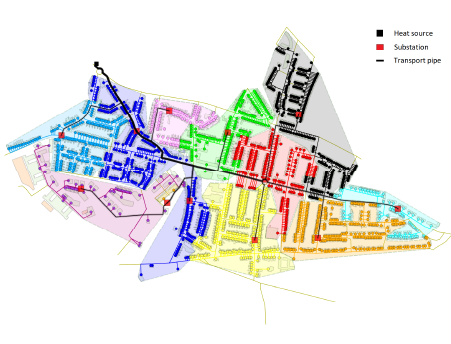
Figure 1: Case study of Hengstdal neighbourhood in Nijmegen, The Netherlands
Several scenarios were performed to assess the impact of future heat demand on network deployment costs using Comsof Heat. If the space heating demands were to reduce by 50% in the future, the network deployment costs are reduced by 9% and 16%, respectively, with and without considering domestic hot water demand. This demonstrates how challenging it would be for future district heating networks to remain profitable, while reducing heat demand, and we argue that denser areas would be required to achieve it. Furthermore, the results show that the cost of trenching is a dominant factor in the overall deployment cost of DH networks. To reduce trenching expenses, combining construction work with other infrastructure services like sewage, gas, and roads is recommended.
Optimizing thermal energy storage
Thermal energy storage is an integral part of 4th generation district heating systems and it is crucial to bridge supply and demand gap. The thermal energy storage models for centralized and distributed storage are developed and integrated with Comsof Heat. The impact of centralized and distributed storage on the total network cost of DH network is examined using Comsof Heat with the help of a case study. The results show that the total network costs can be reduced up to 4% in case of centralized networks and up to 7% in case of distributed storage.
The findings reveal that the optimal storage size varies depending on the storage distribution and cost configurations. In this study, when storage is distributed to 7 and 10 locations, the maximum network cost reduction rises, but falls as distribution proceeds. This demonstrates that there is a perfect location to distribute the storage. It is no longer profitable to distribute after that point. The ideal storage distribution in this case study is between seven and ten locations. The study emphasizes the importance of finding the ideal location and size of storage to maximize cost reduction.
Comsof Heat can now assess various storage options, such as centralized or distributed storage, to determine the optimal size, location, and configuration. Comsof Heat enables designers to analyze the impact of different storage scenarios on overall network costs and performance, ensuring efficient utilization of resources.
Figure 2: Case study of Kortrijk city center with centralized and decentralized storage
Importance of integrating multiple sources
Integration of multiple sources is key to decarbonization since the renewable energy sources are mostly distributed. An automated design method to create multi-source branched DH networks are developed and integrated with Comsof Heat. A source selection algorithm is also implemented that selects sources based on given criteria in case of more sources than required. Using this developed algorithm, a case study is developed to investigate the impact of different energy sources selection on investment costs, energy production costs, carbon costs, and emissions. It shows that low-carbon sources such as heat pumps are not favored by cost optimization unless the carbon cost is significantly increased. The research emphasizes the need for higher carbon costs to promote the use of low-carbon sources in DH networks.
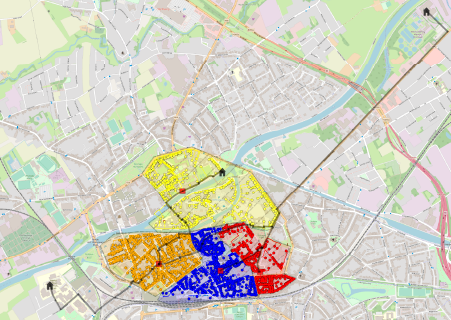
Figure 3: Case study of Kortrijk city center with multiple energy sources
Network topology: ring vs branched
Designing the optimal network topology configuration is another challenge in district heating systems. While the ring configuration offers benefits such as redundancy, flexibility, and prosumer integration, it incurs higher total network deployment costs compared to the branched topology. As part of the PhD, an automated method to design ring-topology DH networks is developed. A case study is developed using this method and it is found that the total network deployment cost of ring topology is around 10% higher than that of the branched network. When the transport layer (where the ring is present: See Figure 4) is compared, the total network deployment cost of the ring topology is 75% higher than that of the branched network.
The results can vary based on the network design, specified cost parameters, and pipe sizes. However, the developed design tool can be used with ease to provide insights into different network topologies, such as ring or branched configurations, and their associated costs and benefits. Comsof Heat facilitates the analysis of various configurations, empowering designers to make informed decisions based on factors like costs, redundancy and flexibility.
Figure 4: Ring topology network in the transport layer with multiple energy sources
Learn about the three levels of district energy network design maturity to explore how designers of engineering and consultancy firms can approach feasibility studies for optimal results.
5th generation district heating systems: an economic comparison
The fifth-generation district heating systems (5GDH) is very energy efficient and its very low temperature requirement opens up the possibility to integrate more renewable and waste heat sources into the network. During my PhD, I have developed an automated method to design 5GDH networks and integrated it with Comsof Heat similar to other models. While 5GDH networks can reduce peak heat demand, they require higher electricity demand at the building level due to the presence of building side heat pumps. Though the heat loss of 5GDH networks (151 kW) is significantly smaller than the 3rd generation (3GDH) networks (1983 kW), the total cost (investment and operational cost) of 5GDH networks are higher compared to 3GDH networks. The 5GDH network is financially attractive only when there is a free low temperature waste heat available (at least 12 to 15 °C). Otherwise, conventional DH network remain economically attractive for the cost parameters and electricity prices used in the study.
Challenges and considerations
While 4th and 5th generation district heating systems offer promising solutions, several challenges need to be addressed:
- Design and planning: Designing and planning a large scale city wide DH networks is not easy since there are different scenarios and options to consider in terms of sustainability, cost, future expansion, etc.
- Storage and flexibility: Storage plays a vital role in balancing heat supply and demand fluctuations. Identifying the optimal storage size and distribution is essential to maximize cost reductions and ensure system flexibility.
- Economic viability: Deploying advanced DH systems can come with higher initial costs, making it essential to consider long-term economic viability and the availability of cost-effective low-carbon heat sources.
- Environmental impact: While DH systems generally offer improved energy efficiency and reduced emissions, it is essential to consider the environmental impact associated with the extraction and utilization of heat sources, as well as the disposal of waste heat.
Energy-efficient district heating systems
As we strive to transition towards a sustainable energy future, 4th and 5th generation district heating systems have emerged as key solutions for efficient and eco-friendly heat distribution. However, the complexity of these systems necessitates the use of automated design tools to optimize network designs, storage solutions, and configurations.
Comsof Heat, an advanced automated design tool, serves as a powerful ally in this endeavor. By leveraging its capabilities, designers can efficiently analyze network deployment costs, storage options, and network configurations. Comsof Heat empowers designers to make informed decisions, ultimately resulting in cost-effective and energy-efficient district heating systems.
Transforming sustainable energy in rural Scotland with Comsof Heat
This article shares the insights gained from the research project conducted at the University of Glasgow focused on the feasibility of District Heat Networks (DHN) for rural areas in Scotland. Leveraging the advanced capabilities of Comsof Heat, it demonstrates how it’s possible to create greener, more sustainable energy solutions for virtually any community.

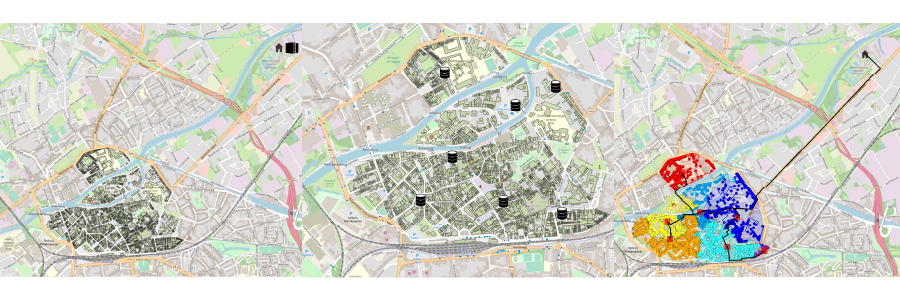
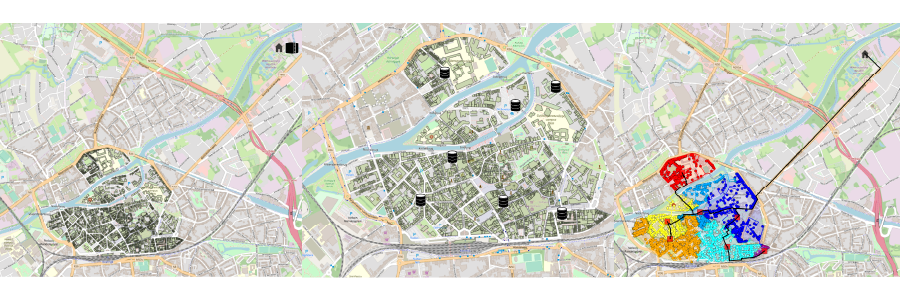
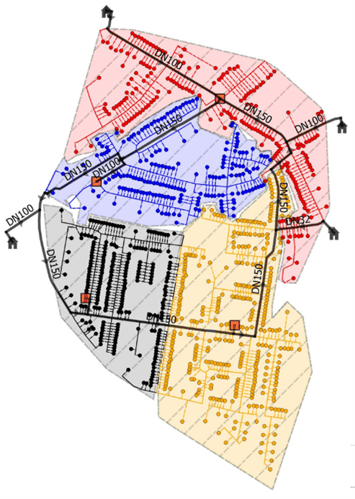
 Previous
Previous





